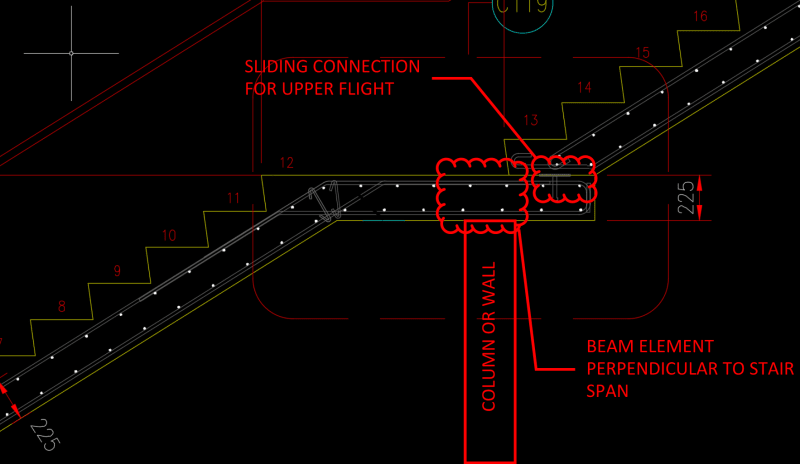Envi_Eng101
Civil/Environmental
I am tasked with the design of this structural system of a reinforced concrete suspended stair. The stair is for public access, the first landing and last landing is a proposed footpath on grade 1.8m wide. The two footpaths are connected via two 3m flights of stair with an interim landing which is a (1.8m x 1.8m slab ).
Scenario 1. The interim slab is supported mid span by a square 300mm x 300mm column on an isolated pad foundation.
Scenario 2. The interim slab is supported on a reinforced masonry wall at mid span on a strip foundation.
What i am essentially struggling with is essentially designing the two-way interim slab. In terms of understanding the behavior of the slab in bending. I assume the stairs and slab will be cast monolithically. The slab essentially has two end conditions two ends being fixed-continuous (My) and the other two sides are free (Mx) i.e ( essentially an overhang on either side of the interior column ).
My Questions
1. Is my understanding or interpretation of the behavior of the slab accurate? If not what is the correct analysis and design of this interim slab.
All i have done so far is design the waist slab for the 3m flight of suspended stair.
Determined the design factored load for the slab and check it for two way and one-way shear.
I don't have much experience doing R.C designs. please guide me accordingly as to what design steps i need to take.
Regards.
Scenario 1. The interim slab is supported mid span by a square 300mm x 300mm column on an isolated pad foundation.
Scenario 2. The interim slab is supported on a reinforced masonry wall at mid span on a strip foundation.
What i am essentially struggling with is essentially designing the two-way interim slab. In terms of understanding the behavior of the slab in bending. I assume the stairs and slab will be cast monolithically. The slab essentially has two end conditions two ends being fixed-continuous (My) and the other two sides are free (Mx) i.e ( essentially an overhang on either side of the interior column ).
My Questions
1. Is my understanding or interpretation of the behavior of the slab accurate? If not what is the correct analysis and design of this interim slab.
All i have done so far is design the waist slab for the 3m flight of suspended stair.
Determined the design factored load for the slab and check it for two way and one-way shear.
I don't have much experience doing R.C designs. please guide me accordingly as to what design steps i need to take.
Regards.

